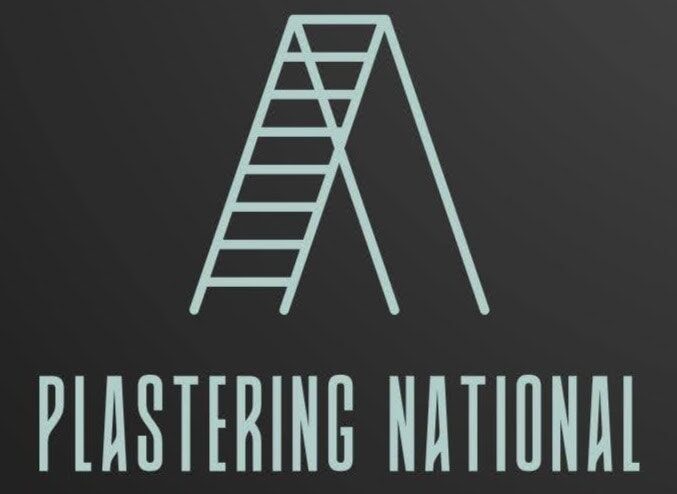Maintaining your home’s plaster is essential for its appearance and structural integrity. Over time, changes and wear to plastered surfaces may necessitate repairs or replacement.
This guide will outline the signs that indicate it’s time to replaster, discuss what can go wrong with plaster, and explore the benefits of replastering.
Let’s get straight to the point.
Replastering is essential for maintaining the appearance and structural integrity of your home. Signs that your house may need replastering include cracks, bulging, flaking, peeling, discolouration, and loose plaster.
Moisture, impact damage, or foundation shifts can cause these issues. The extent of damage and underlying causes can affect whether to repair or replaster.
Replastering involves removing damaged plaster, preparing the surface, and applying a new layer. It can be challenging, especially in older homes, and may require professional help.
Benefits include improved aesthetics, durability, and potential increases in property value.
What Is Replastering?

Replastering involves removing old or damaged plaster from walls or ceilings and applying a fresh layer. It’s essential when the existing plaster becomes loose, cracked, or discoloured.
Proper replastering improves the appearance and stability of a home, potentially increasing its value. While it’s possible to replaster yourself, it’s a complex and time-consuming task best suited to professionals to ensure a high-quality finish.
Signs You Need To Replaster
Observing the condition of your home’s walls and ceilings is important to avoid more extensive damage and expensive repairs in the future.
Recognising the early signs that your property might need replastering can save time and money.
Here are some of the most common indicators that your plaster may need attention:
1. Cracking Or Bulging
- Hairline Cracks: Small, thin cracks may not seem like a big deal, but they can indicate the early stages of plaster deterioration.
- Deep Cracks and Bulges: More severe cracks or bulging areas suggest the plaster detaches from the underlying surface. This issue often occurs due to the building’s natural movement or shifts in the foundation.
- Impact Damage: If a specific area shows deep cracking due to a physical impact, it may be necessary to replaster that section to restore the surface.
2. Flaking Or Peeling
- Moisture Damage: When plaster starts to flake or peel, it’s a sign that moisture has penetrated the surface, weakening its integrity.
- Paint Issues: Peeling paint often accompanies flaking plaster, indicating that the moisture problem is severe enough to affect both layers.
- Humidity Sensitivity: Areas exposed to high humidity, like bathrooms or kitchens, are more prone to this damage and may require more frequent attention.
3. Discolouration
- Water Stains: Yellow or brown stains on the plaster are clear indicators of water damage, usually from leaks in the roof, walls, or plumbing.
- Mould Growth: Persistent moisture can lead to mould or mildew on the plaster surface, damaging it and posing health risks.
- Sunlight Exposure: Discolouration caused by excessive sunlight might not compromise the plaster’s integrity but can affect the aesthetic appeal, leading homeowners to consider a cosmetic replaster.
4. Loose Plaster
- Hollow Sounds: If tapping on the wall or ceiling produces a hollow sound, it’s a sign that the plaster has detached from the wall surface.
- Surface Movement: Loose plaster can sometimes be detected visually when the surface moves slightly or vibrates when touched.
- Risk of Falling: In severe cases, loose plaster may pose a safety risk as chunks could fall off, requiring immediate repair or replacement.
5. Structural Damage
- Holes and Missing Sections: Large holes or sections where the plaster has completely fallen away reveal deeper issues that need immediate attention.
- Foundation Shifts: Significant structural changes or shifts in the building’s foundation can cause widespread plaster damage, necessitating extensive replastering.
- Age of the Building: Older properties are more likely to have brittle or weakened plaster that can easily break away, often requiring complete replastering.
Additional Indicators Of Plaster Problems
Aside from the most obvious signs, other subtle indicators might suggest it’s time to replaster:
- Efflorescence: This chalky white deposit appears on the plaster surface when moisture draws salts out of the wall. It is a warning sign of excess moisture that can lead to plaster failure.
- Cold or Damp Spots: Areas of plaster that feel damp or cold to the touch might indicate moisture is trapped within the wall, potentially damaging the plaster over time.
- Odours: A musty smell can accompany mould growth behind the plaster, signalling hidden moisture problems that might require the wall to be stripped back and replastered.
Deciding When To Repair Or Replaster
Not every imperfection requires a complete replastering job. Minor issues can often be resolved with targeted repairs, but significant damage requires more extensive work.
Here are some factors to consider when deciding between repair and replastering:
- The extent of the Damage: Small cracks or a few spots of flaking can be patched up, but large areas of damage usually warrant a full replaster.
- Underlying Issues: If moisture or structural problems are causing the plaster to fail, it’s essential to address these root causes before replastering. Otherwise, the damage will likely reoccur.
- Age and Condition of the Property: Replastering might be a better long-term solution for older homes, as it ensures the surface remains durable and visually appealing.
Method For Replastering
Replastering is a detailed process requiring careful preparation. Here’s a step-by-step guide to ensure a successful outcome:
1. Inspect The Surface
You should start by examining the wall or ceiling for signs of damage, such as cracks, holes, or loose areas.
2. Prepare The Surface
Clean the area thoroughly, removing any loose debris. Ensure the surface is dry and free of contaminants affecting plaster adhesion.
3. Apply A Bonding Agent
A bonding agent can be used on the wall or ceiling to create a solid base for the new plaster layer. This step ensures the plaster sticks properly to the surface.
4. Mix The Plaster
Follow the manufacturer’s guidelines to mix the plaster with water until it reaches the desired consistency.
5. Apply The Plaster
Using a trowel, spread the plaster in thin, even layers, eliminating any lumps or ridges as you go.
6. Smooth The Surface
After applying the plaster, smooth it with a trowel to create a uniform finish.
7. Allow To Dry
Let the plaster dry completely before painting or adding any other finishes. Drying times can vary depending on the thickness and the room’s humidity.
This process is labour-intensive and requires skill, so it’s advisable to consult a professional for more experience.
Challenges Of Replastering

Replastering can be a complex task, especially when dealing with older homes. Some common challenges include:
- Condition of Existing Plaster: Old plaster can be tricky to remove, particularly if it’s damaged or weakened by cracks and moisture.
- Use of Hazardous Materials: Older plaster may contain substances like asbestos, which require careful handling and removal by professionals.
- Surface Preparation: Thoroughly preparing the wall or ceiling is critical to ensuring the new plaster adheres properly. This step can involve significant work if the surface is uneven or damaged.
Replastering new constructions is usually more straightforward, as there is no need to deal with existing plaster layers or underlying issues.
Benefits Of Replastering
Replastering your home can offer several advantages, both aesthetic and practical:
- Enhanced Appearance: Fresh plaster gives walls and ceilings a clean, smooth look, ready for painting or wallpapering.
- Increased Property Value: Well-maintained plaster can improve the appearance and stability of a home, increasing its overall value.
- Durability: Proper replastering extends the lifespan of your walls and ceilings, protecting them from future damage.
- Better Insulation: Replastered walls can provide improved insulation, helping to regulate your home’s temperature.
Conclusion
Replastering is more than just a cosmetic fix; it’s vital to maintaining your home’s structure and aesthetics. While DIY options exist, the complexity of the task often means that hiring a professional is the best choice.
Skilled plasterers ensure the job is done correctly, using the best materials and techniques. Investing in professional replastering will give your walls and ceilings a lasting finish that looks great and stands the test of time.
Frequently Asked Questions About Replastering
How do I know if my walls need replastering?
Walls that have developed cracks, bulges, or crumbling plaster may need to be replastered. You should get an expert’s opinion on the damage’s severity if you notice any of these problems.
Can I replaster my walls myself?
Replastering your own walls is possible, but it’s a laborious job that requires experience and specialised equipment. If you want the job done right and for it to last, you should probably hire a pro.
How long does replastering take?
The time needed to replaster a room is proportional to the square footage involved and the severity of the damage. In most cases, a professional can wrap up the work in a week or less.
How much does it cost to replaster a room?
Replastering a room can be expensive depending on factors like the square footage to be covered, the severity of the damage, and the plastering material chosen. If you want a reliable estimate, it’s best to get one from a pro.
What causes plaster damage?
Asphalt, concrete, and plaster are all susceptible to damage from moisture and temperature swings. Plaster degrades over time and seasonal shifts, showing signs like cracking and sagging. Obviously, water can cause discoloration and bubbling, and extreme temperatures can cause fissures.

